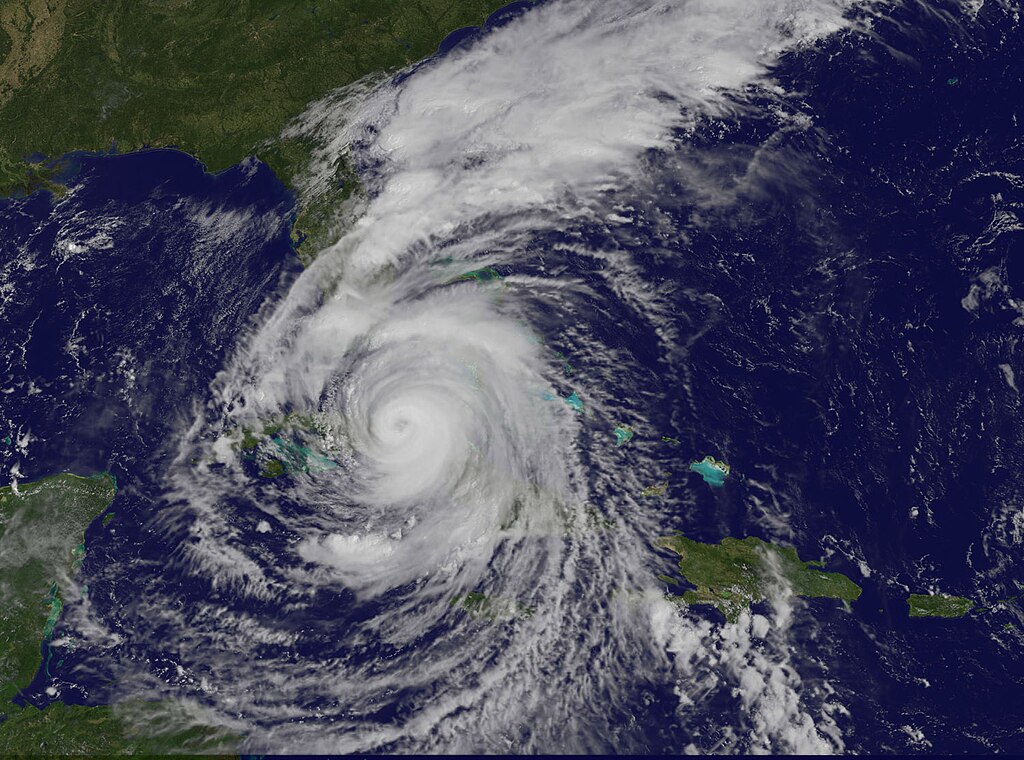List of Florida Hurricanes

Florida faces more hurricanes than any other U.S. state, making preparation essential. This list of Florida hurricanes offers a clear snapshot of the state’s vulnerability, storm frequency, and seasonality, along with key terms to help you understand how hurricanes are measured and classified.
Florida’s Hurricane Exposure
With its long coastline and warm waters, Florida is especially vulnerable to tropical storms.
No region is truly immune, every part of the state has experienced hurricane impacts at some point, including most Florida cities and all counties in Florida.
Storm activity is most intense from mid-August through late October, the peak of hurricane season.
How Are Hurricanes Categorized? Hurricane Wind Scale
The Saffir-Simpson Hurricane Wind Scale is used to classify hurricanes by their sustained wind speeds:
- Tropical Storm: Winds between 39 to 73 mph
- Category 1 Hurricane: 74 to 95 mph, some damage expected
- Category 2 Hurricane: 96 to 110 mph, extensive damage likely
- Category 3 Hurricane (Major): 111 to 129 mph, devastating damage
- Category 4 Hurricane: 130 to 156 mph, catastrophic damage
- Category 5 Hurricane: 157+ mph, total roof and structure failure possible
This system helps assess potential storm impact and is often referenced when tracking or comparing major hurricanes in Florida.
Notable Florida Hurricanes
Florida’s hurricane history is marked by devastating storms that reshaped communities, spurred new building codes, and caused billions of dollars in damage. Below is a list of Florida hurricanes that made a major impact across different regions and decades.
- Labor Day Hurricane (1935), Category 5 – The strongest hurricane to ever strike the U.S., devastated the Florida Keys with winds up to 185 mph.
- Great Miami Hurricane (1926), Category 4 – Caused widespread destruction across South Florida, leading to a major collapse of the building boom.
- Okeechobee Hurricane (1928), Category 4 – Resulted in over 2,500 deaths from catastrophic lake flooding.
- Hurricane Andrew (1992), Category 5 – Flattened Homestead and caused over $25 billion in damage.
- Hurricane Charley (2004), Category 4 – Made landfall at Punta Gorda with intense winds, causing severe destruction across Central Florida.
- Hurricane Irma (2017), Category 4 – Tracked up the entire Florida peninsula, impacting nearly every county.
- Hurricane Michael (2018), Category 5 – Slammed into Mexico Beach as the first Category 5 since Andrew.
- Hurricane Ian (2022), Category 4 – Ravaged southwest Florida, with storm surge and wind damage across Fort Myers and surrounding areas.
- Hurricane Helene (2024), Category 4 – Struck Perry, FL, with destructive winds and major coastal flooding.
- Hurricane Milton (2024), Category 3 – Hit Siesta Key, causing storm surge flooding and widespread wind damage.
Florida Hurricane History by Era
Florida’s hurricane record spans centuries, with each era marked by different challenges, damages, and technological advances. This breakdown highlights how storm patterns and impacts have changed over time across the list of Florida hurricanes.
Pre-1900 Hurricanes
The first known hurricane to impact Florida dates back to 1523, when two Spanish ships were wrecked along the western coast of the peninsula.
While records from this period are limited, historical accounts suggest that many early storms caused significant destruction, especially in coastal settlements. Due to sparse documentation, details are often vague, but the impact was still substantial.
1900–1949
The period from 1900 to 1949 is considered the deadliest era in Florida hurricane history.
During this time, storms like the 1926 Miami Hurricane and the 1928 Okeechobee Hurricane caused massive loss of life and widespread destruction. The Okeechobee storm alone led to over 2,500 deaths when the lake’s dike failed, flooding surrounding communities.
Without modern radar, satellite imagery, or reliable warning systems, residents had little time to prepare or evacuate, making storms during this era especially lethal.
1950–1999
The development of radar and satellite technology improved hurricane tracking and forecasts.
Despite these advancements, the state still experienced several catastrophic storms, including Hurricane Donna (1960) and Hurricane Andrew (1992).
Hurricanes during this era caused widespread destruction, major flooding, and billions in damage, proving that even with better warning systems, powerful storms could still devastate Florida.
2000–Present
Since 2000, Florida has faced more frequent and intense hurricanes, with several seasons bringing multiple direct hits. The 2004 and 2005 hurricane seasons were especially active, with storms like Charley, Frances, Ivan, Jeanne, and Wilma striking the state in rapid succession.
In recent years, hurricanes have grown even more destructive, Hurricane Irma (2017) swept up the entire peninsula, while Hurricane Ian (2022) caused catastrophic wind and flood damage in southwest Florida. This era has underscored the growing impact of powerful storms on the state’s infrastructure and communities.
Common Hurricane Hazards in Florida
Hurricanes are powerful storms that pose multiple threats beyond just high winds. Florida’s flat terrain and long coastline make it especially vulnerable to a range of hurricane hazards. Knowing what to expect helps residents prepare and respond more effectively.
Wind Damage
Sustained winds and sudden gusts can collapse mobile homes, tear off roofs, snap trees, and down power lines. The strongest winds usually occur near the eye wall, but damage can extend far from the storm’s center.
Storm Surge
Storm surge happens when hurricane winds push ocean water inland, raising sea levels dramatically. This often causes the most fatalities, especially in low-lying coastal areas where water can rise 10 to 20 feet.
Inland Flooding
Even after landfall, slow-moving storms can dump torrential rain across the state. This leads to flash flooding, road closures, and damage to homes far from the coast.
Tornadoes
Tornadoes frequently spin up in the outer rain bands, especially in the front-right quadrant of the storm. While typically short-lived, they can still cause severe localized damage.
How to Prepare for Hurricanes in Florida
Being ready before a storm hits can save lives and protect property. Every Florida resident should have a clear plan, a well-stocked emergency kit, and stay informed as conditions change.
Make a Plan
Know your evacuation zone, identify nearby shelters, and set up a communication strategy with family members.
Build a Kit
Pack essentials like nonperishable food, bottled water, medications, flashlights, and a battery-powered radio for weather updates.
Stay Informed
Follow trusted sources like NOAA, the National Hurricane Center, and local emergency alerts for real-time updates.
FAQs
What month has the most hurricanes in Florida?
September has historically seen the highest number of hurricanes during the peak of hurricane season.
What part of Florida gets the most hurricanes?
The Florida Keys and southeast coast are struck more often than other regions.
What’s the deadliest hurricane in Florida history?
The 1928 Okeechobee Hurricane, which caused over 2,500 deaths due to lake flooding.
What was the last major hurricane to hit Florida?
Hurricane Milton in 2024, a Category 3 storm, was the most recent.
How are hurricanes categorized?
Using the Saffir-Simpson Hurricane Wind Scale, based on sustained wind speed.
